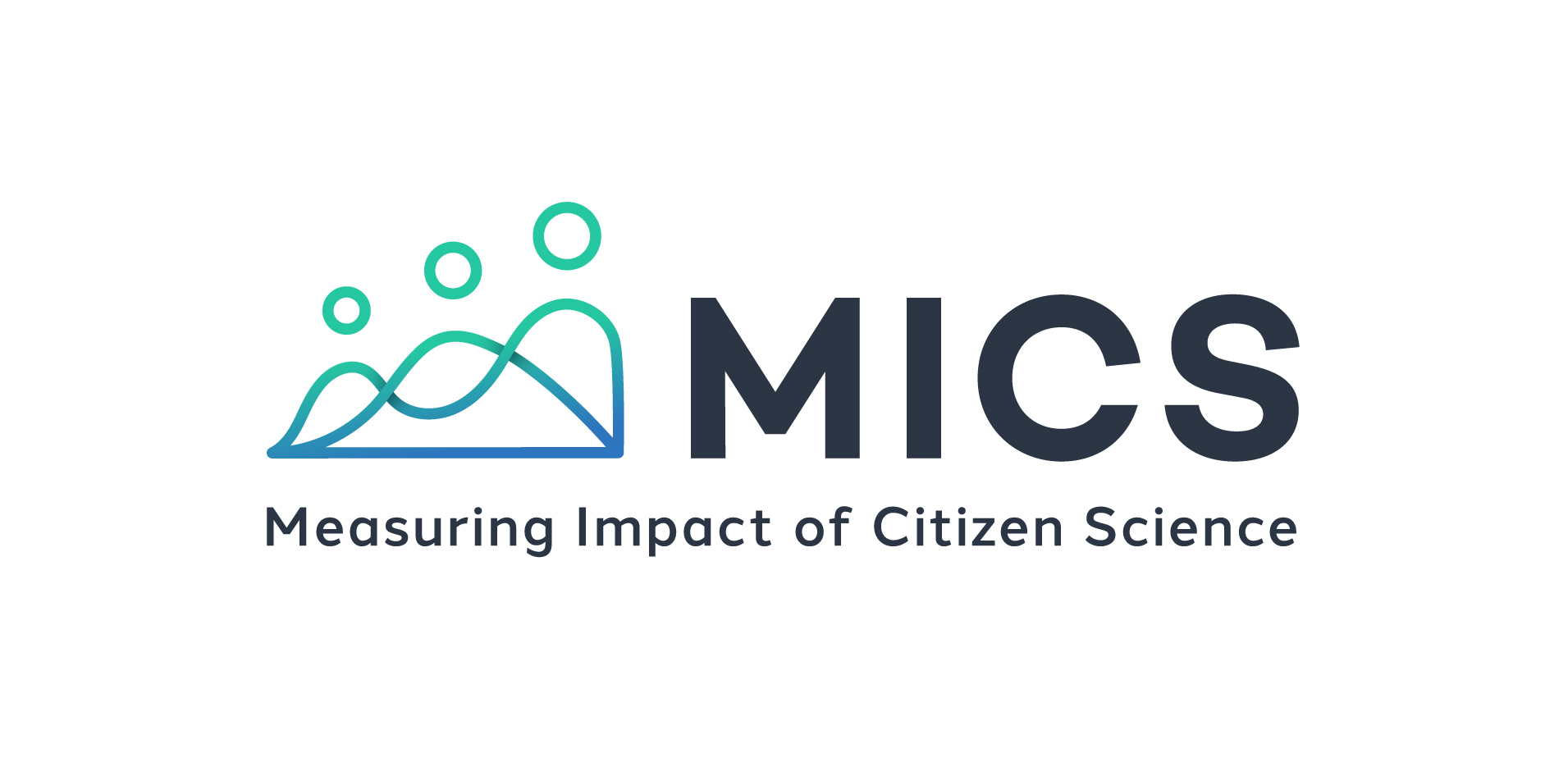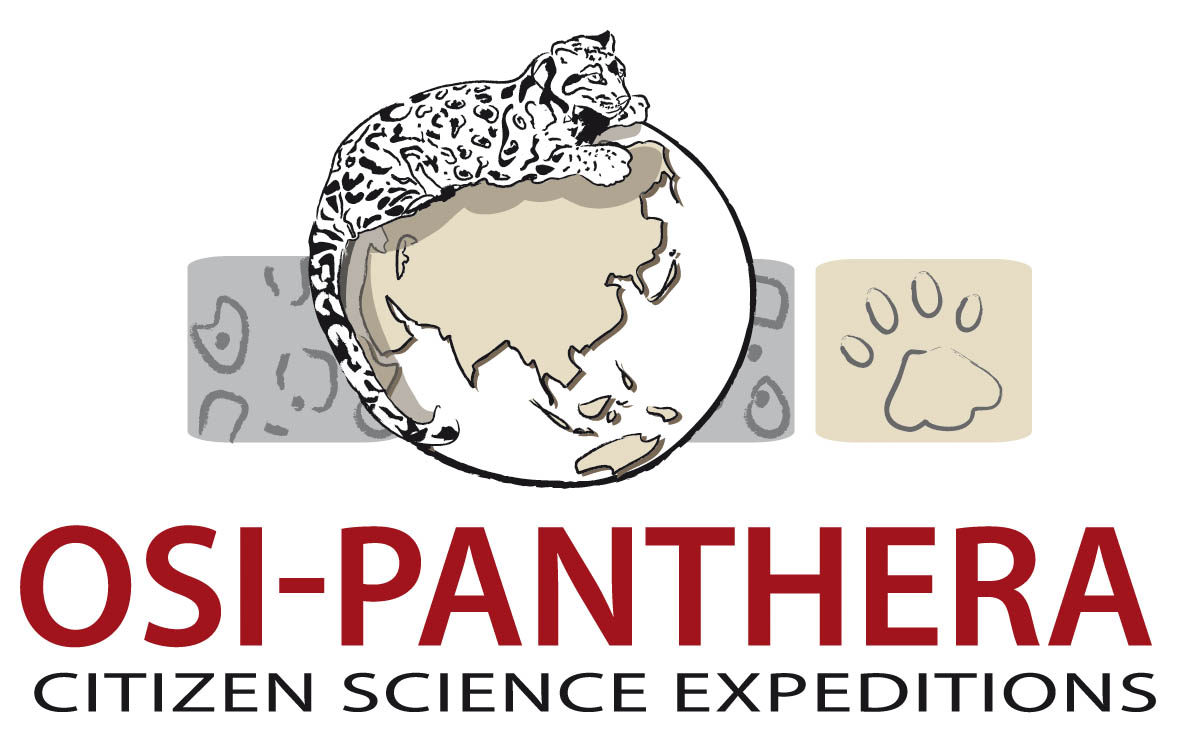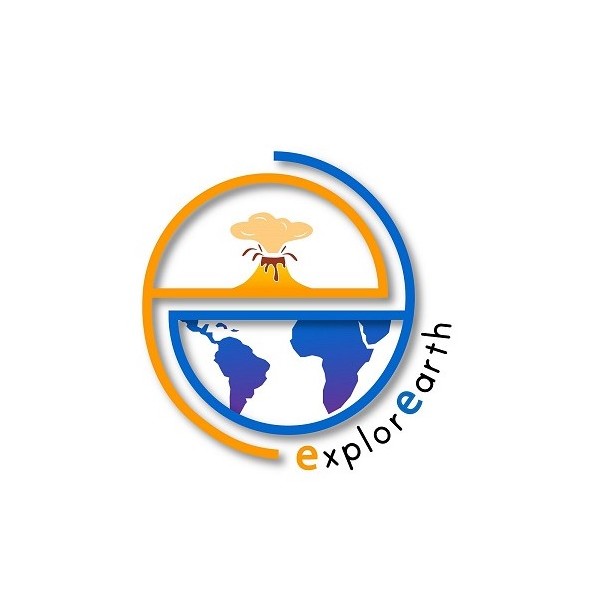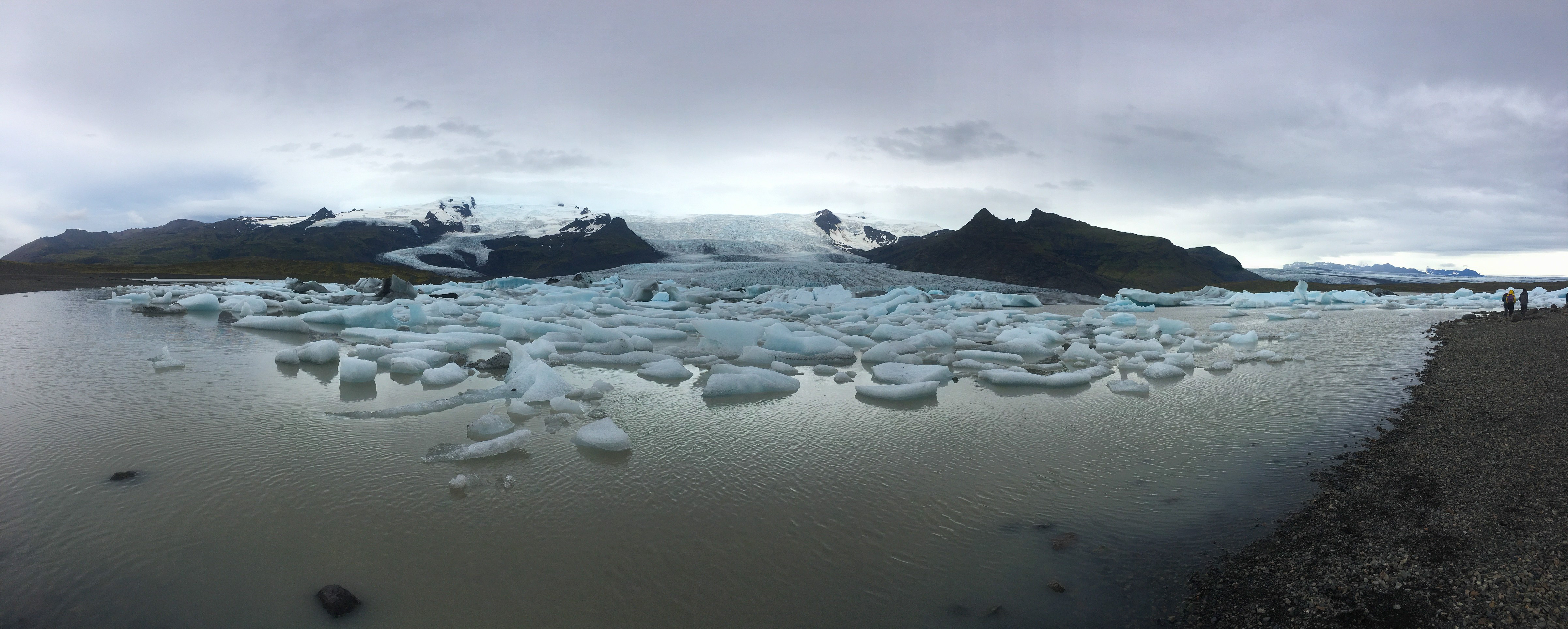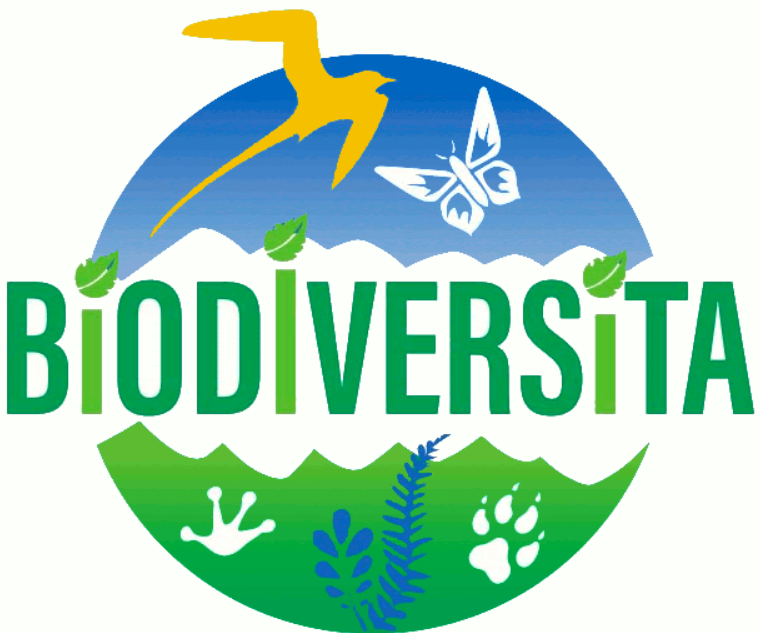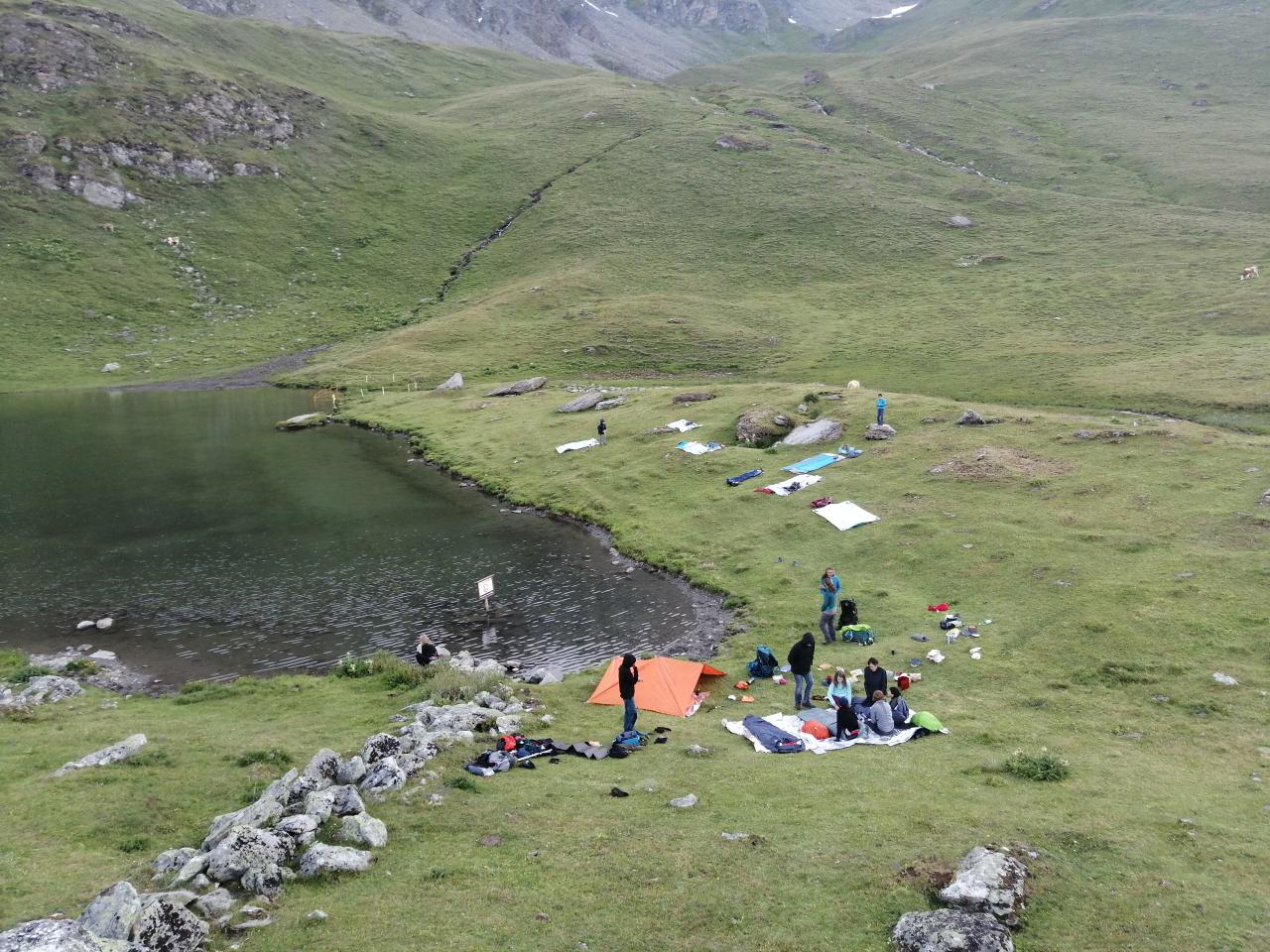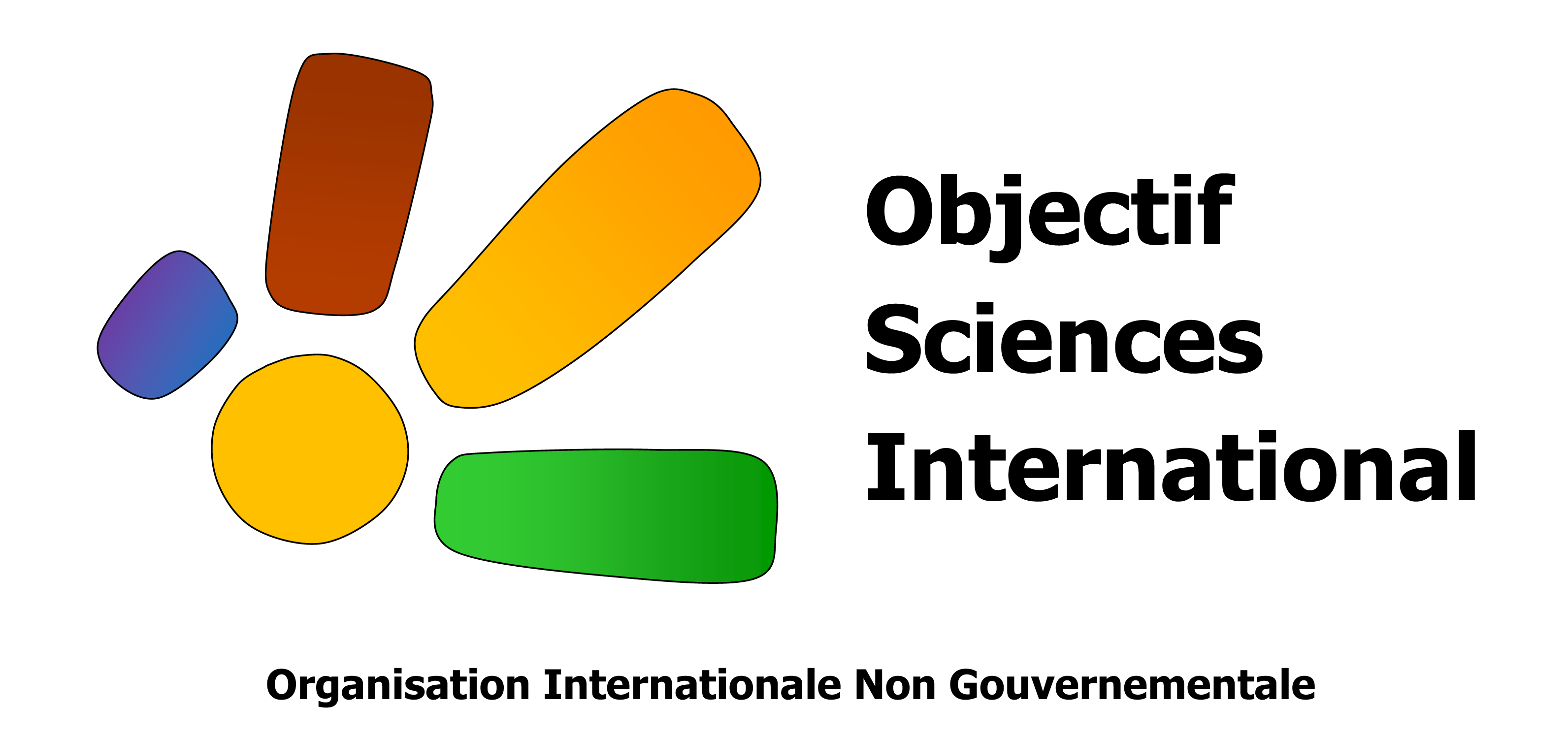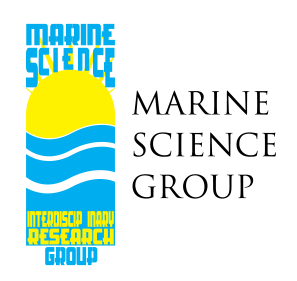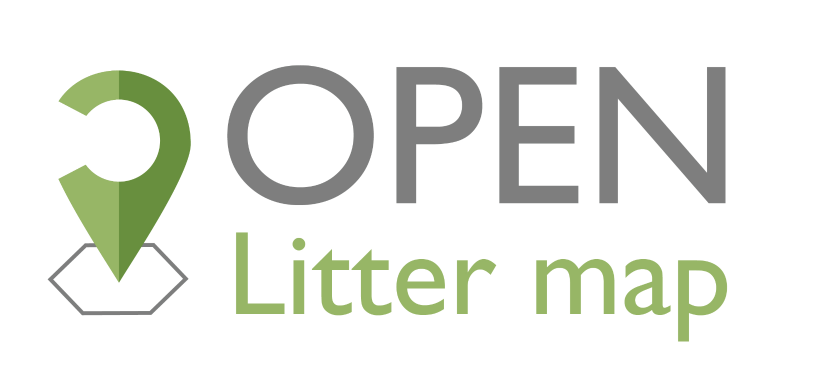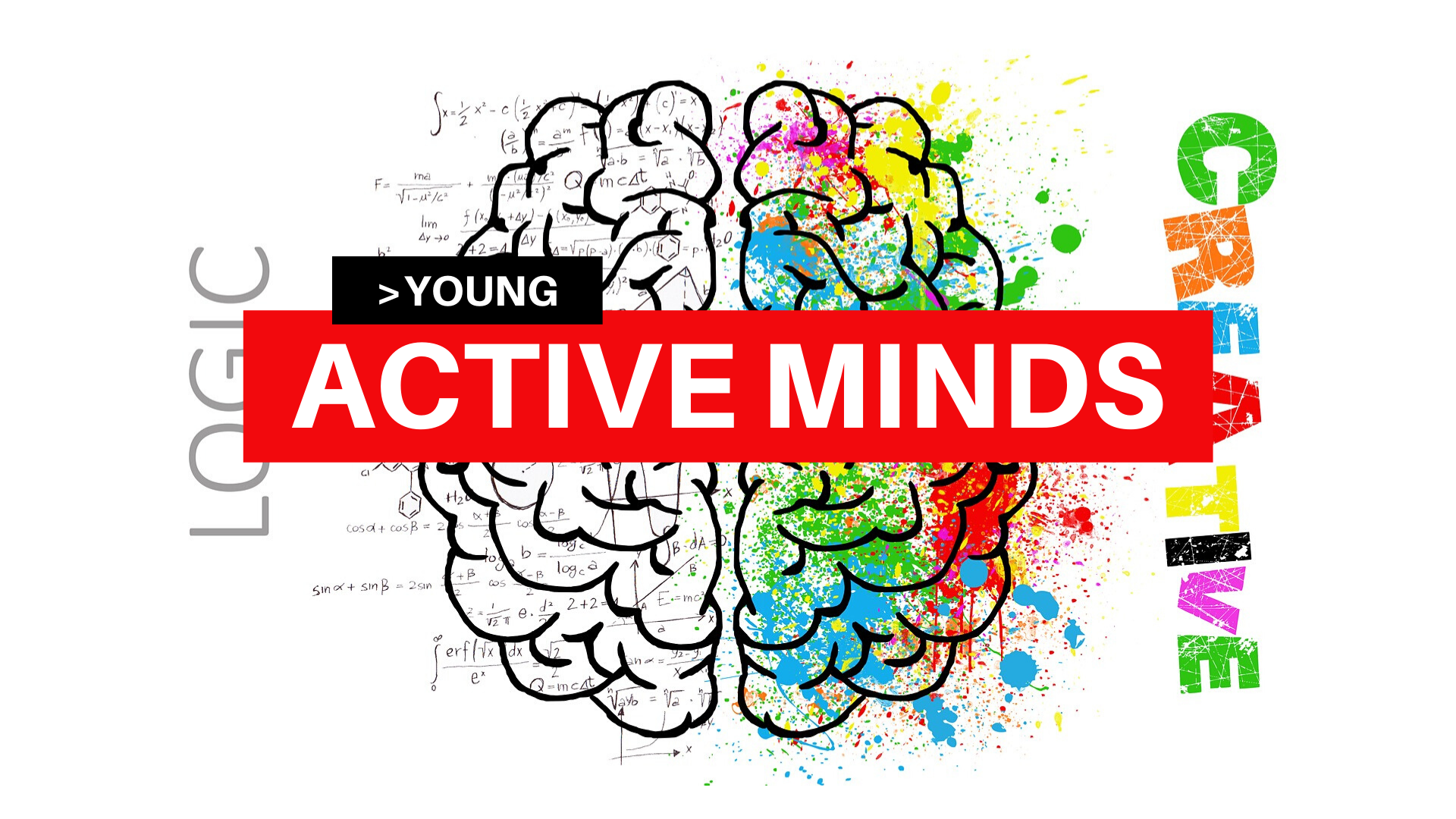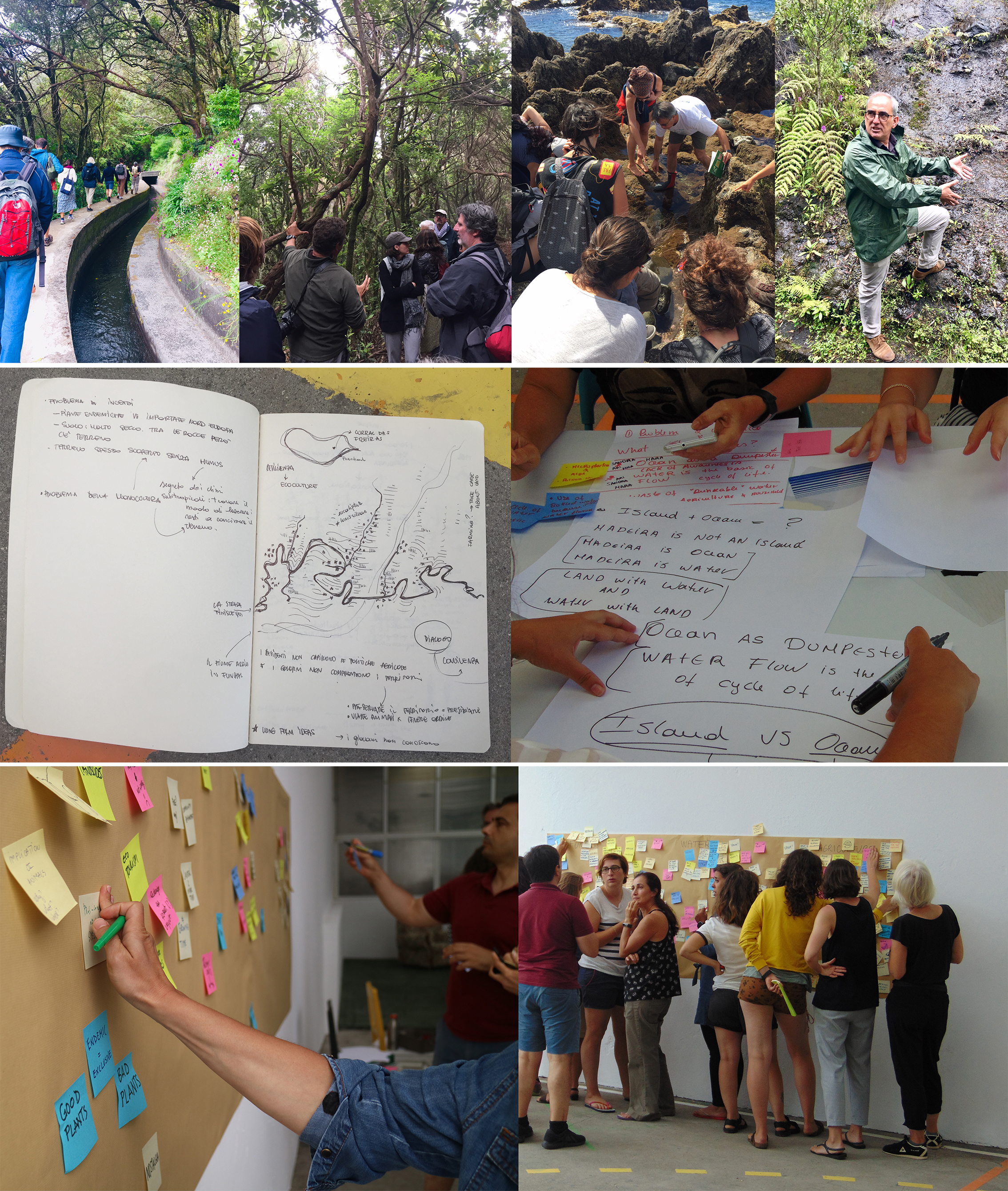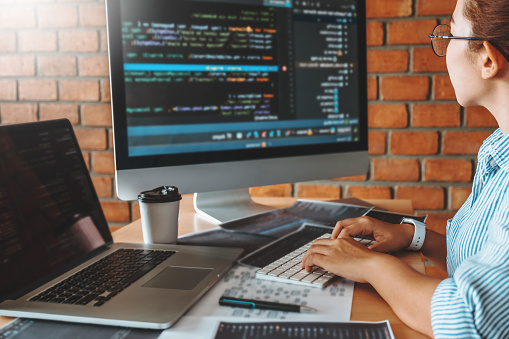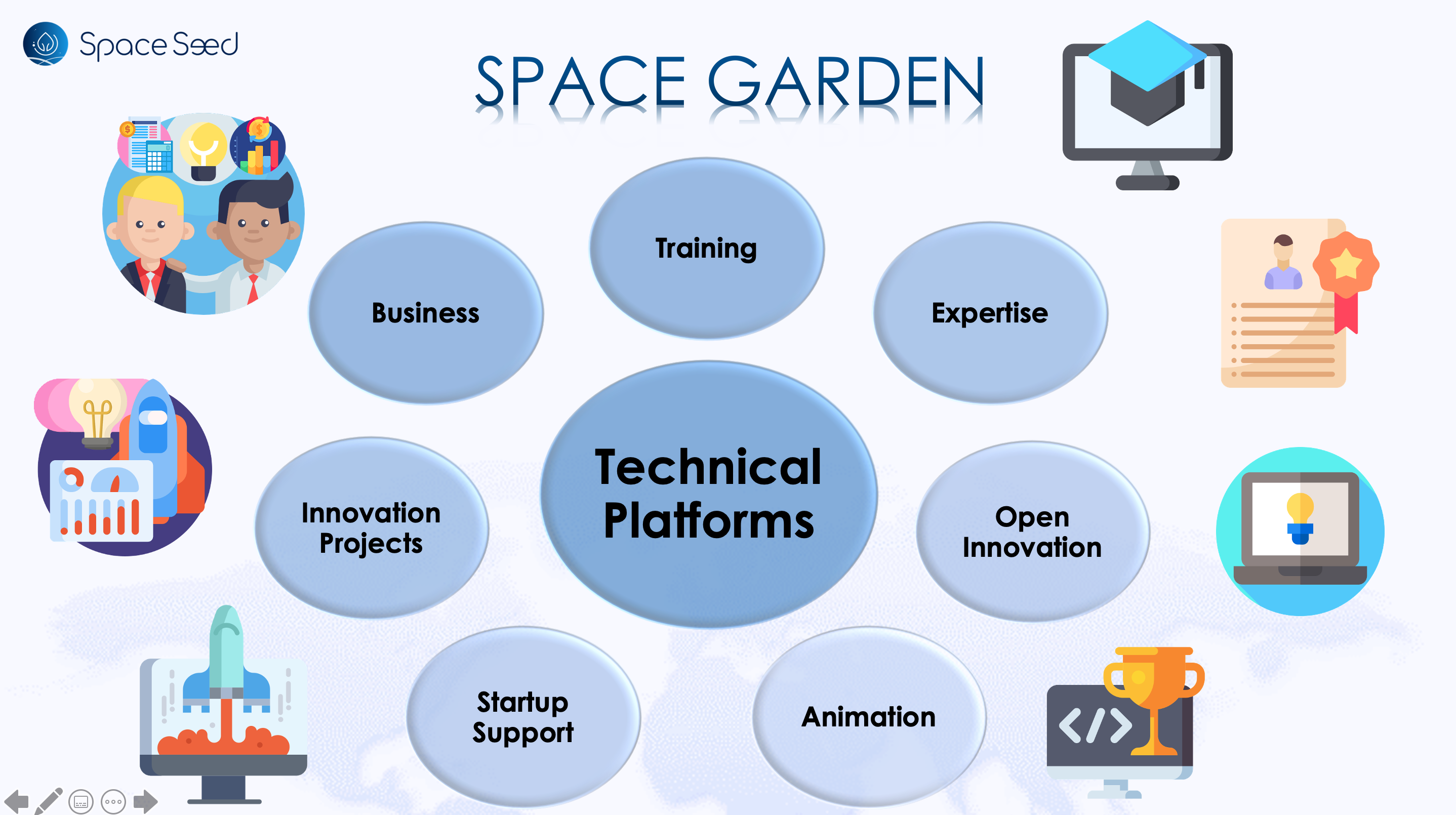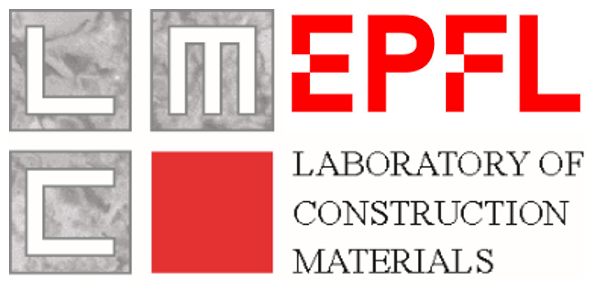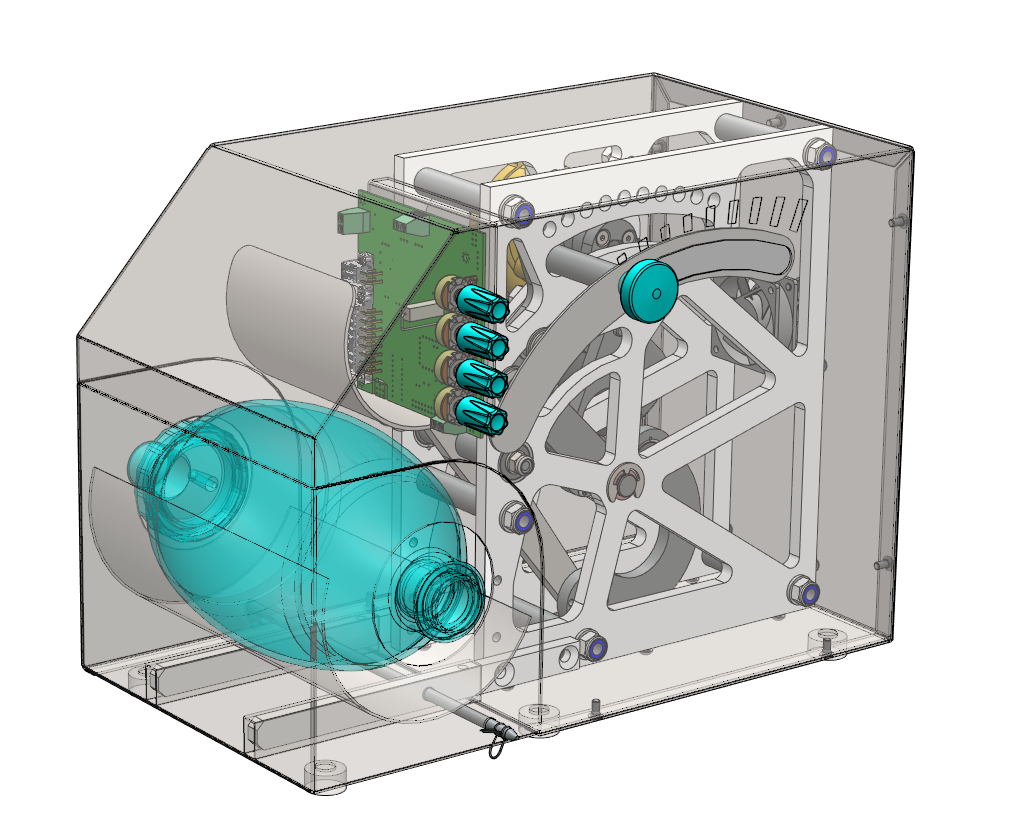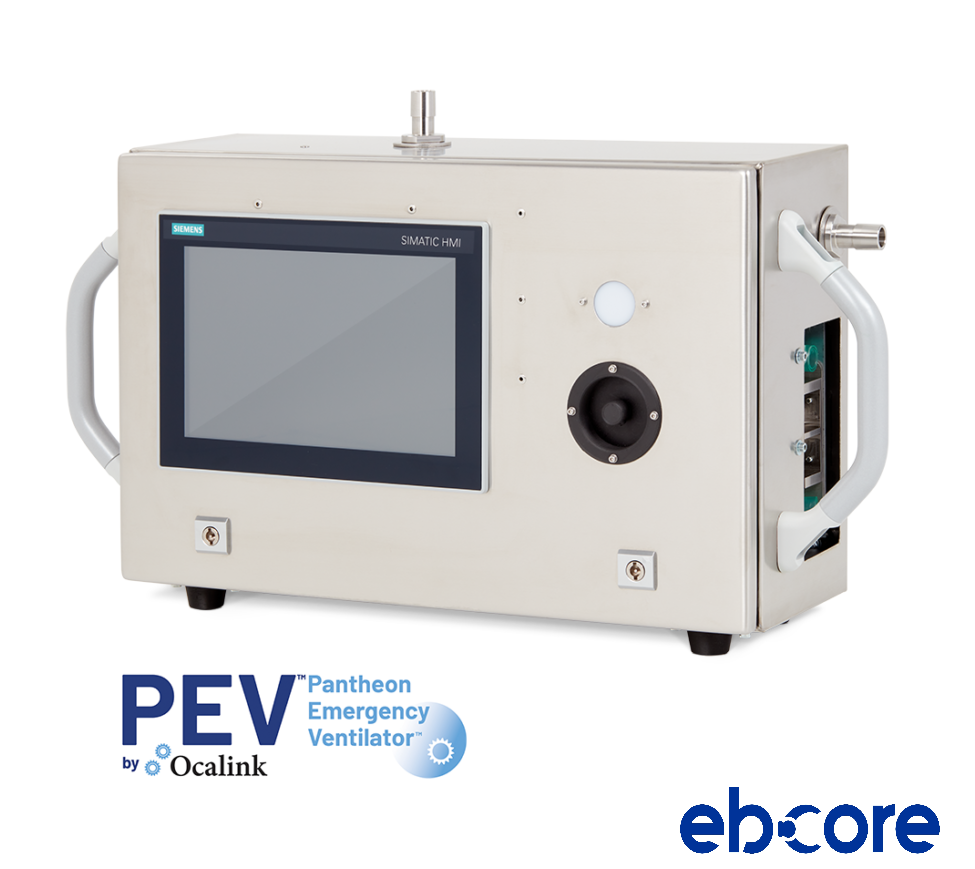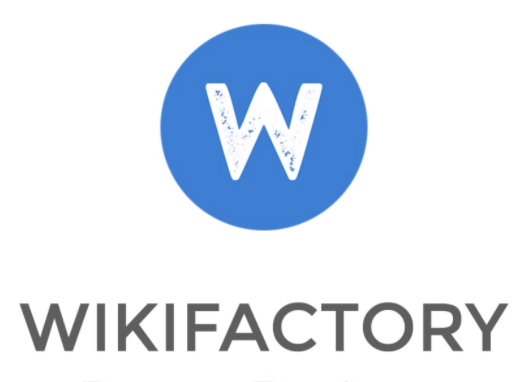Home > Records > Participatory Research, Citizen Sciences and Fab Labs for Peace and Sustainable Development Goals > United Nations - 2020 December 9, 14, 17 - Participatory Research, Citizen Sciences, Crowd-Innovation and Fab Labs for Peace and Development - Annual International Conference
5th Annual International Conference on Participatory Research, Citizen Sciences, Crowd-Innovation and Fab Labs for Peace and Development - 9 December, 2020, United Nations Organized by Objectif Sciences International,
in Official Partnership with ECSA, AddictLab, FabLab DigiScope and Université Paris Saclay
in Partnership of communication with (Other continental or worldwide networks, please contact us)
| Wednesday December 11, 2020
from 09:00 to 18:00 Wednesday evening, de 19:00 à 23:00 : Networking Dinner of Science Science La science est désormais l’affaire de tous. Découvrez la science d’une manière ludique et active. Nous vous proposons d’en découvrir plus sur nos expéditions à la voile, découverte du plancton. for Peace and Development Networks |
FREE ENTRANCE UNDER SUBSCRIPTION (United Nations Access Pass) |
| Presentations was held in english and french. Debates and questions was organized in english and french. | |
| Leading Projects of Education to Science Science La science est désormais l’affaire de tous. Découvrez la science d’une manière ludique et active. Nous vous proposons d’en découvrir plus sur nos expéditions à la voile, découverte du plancton. and Citizen Sciences since 1992, and creating 1st Participatory Researches Camps in 2004, the NGO Objective Sciences International have the Special Consultative Status to United Nations. Active in all continents, the NGO organize every year, since 2012, the International Annual Conference on Rights of Nature in United Nations, at which one participate all Governments actives in this domain or interested by these works. From 2016, and every year, OSI organize into the heart of the United Nations hemicycle the International Annual Conference on the Citizen Sciences and Participatory Researches, in order to allow all the actors and operators in these domains to exchange, meet and share directly and at the largest international level. | |
| Crowd Sourced Sciences Operators of Citizen Sciences who exchange already at national and continental levels (Europe, America, Asia, Africa, Middle-East...) and who desire to exchange together, and share practices and solutions, at the world level, meet together at the Annual International Conference organized in the United Nations. | |
Fab Labs / Citizen Science / Participative Researches
Several public or associative organizations that are active in the domain of Citizen Sciences or Participative Research, federated or organized, at the national level. The main national actors, the federations, and the specific operators, organized presently at the international level, and are called to meet annually at the end of the civil year, at the International Annual Conference on the Citizen Sciences and the Participative Researches, at United Nations, in Geneva.
This annual space of sharing results and pooling of skills, allow to the actors of the domain to exchange practices, solutions, ideas, needs.
Your Annual Exchanges Resource
In the following of the national and continental meetings that are organized in each country and continent by the local federation, this International Annual Conference at United Nations allow the actors to implement in consultation, or to inform mutually, of progress and actions they lead during the year, or that they have in project.
The participants at this Conference are:
- Local and regional actors of different countries
- Thematic Actors by scientific disciplines
- Regional or national federations
- Thematic Federations, by scientific disciplines
- Large Institutions of Science or Education
- Government departments (Education, Research, Environment, Industry ...) and international associations of Ministries
- Specialized Journalists (science, environment, education, sustainable development ...)
- UN agencies (UNDP, UNEP ...)
Subjects that are in the agenda of this year are:
- Standards and references of exchange on Citizen Science practices between national and international organizations
- National and international Charts of Citizen Science, examples, projects, ongoing discussions of shares
- Financing Solutions of the actions of Citizen Science
- Access of citizen actors to the Research beyond their simple contributions
- Administrative Status / legislative / recognition / etc of actors of Citizen Science projects
- The Citizen Research, beyond the digital interface
- Expected Features of web portals of Citizen Science
- Services for Citizen Science provided by FabLabs
- Dissemination and Exploitation of the results to the uninvolved Big Public
- Road map for the mutual opening of the data collected
| Special Chamber by and for the FabLab : FabLab for the Sustainable Development |
|---|
| FAB SDGs is the Macro-Management Initiative created by OSI - Open Science International (Objectif Sciences International) and Fablab Digiscope - Université Paris-Saclay to facilitate the alignment of fablab activities with the Sustainable Development Goals (SDGs). This workshop of the the Conference, organized in this long term collaboration with the GENEVA FORUM will gather experts from the global fablab network who already align with the SDGs together with new comers willing to align their fablab programs with the SDGs. For this second session at the GENEVA FORUM 2020, the FAB SDGs Working Group will focus on detecting existing and robust programs that already align with the SDGs through an anticipated call for contribution to fablabs. This call will also give new comers the opportunity to expose new programs and activities - even the most disruptive ones - aligning with the SDGs. During the GENEVA FORUM, we will discuss the panel of strategies to support, to distribute, and to bring the most advanced fablab activities, programs and peoples to align with the SDGs at a global scale, to promote the alignment between the Open Science Practices and the SDGs. For participating as speaker at this workshop, you just need to register at GENEVA FORUM on this page, then follow instruction your will received to post a proposal of presentation. For participating as listener and participant, you just need to register at GENEVA FORUM on this page. |
Detailed Program
Exchanges between stakeholders of the meeting took place a round table between speakers and debates with the audience of the Assembly.
Organiser : NGO Objective Sciences International, Geneva
Chairman:
| Mr Thomas EGLI CEO GENEVA FORUM at United Nations : www.osi-genevaforum.org Know more about Thomas EGLI, Founder of Objectif Sciences International, CEO of the GENEVA FORUM |
Co-Chairpersons:
| Mr Romain DI VOZZO in charge of the Fab Lab Chamber Fablab Digiscope|Université paris-Saclay|FAB SDGs Initiative |
Here the Programme of the 5 days of GENEVA FORUM of December 2020, where are described the days dedicated to the Conference on Science for Peace and Sustainable Development Goals.
Official Opening Session
Official welcoming session for Fab Lab Chamber : Tuesday 8 December 3:00 pm
Session organised in partnership with Fab Foundation, FAB SDGs Initiative, Université Paris Saclay and Objectif Sciences International.
- Keynotes
- Remarks on current situation
- informal gathering of Fab Labs; Welcome and preparation for Wednesday Fab Lab activities
Official welcoming session for Citizen Science Chamber : Wednesday 9 December 1:30 pm
Session organised in partnership with ECSA, AddictLab, Science et Cité and Objectif Sciences International.
- Keynotes
- Remarks on current situation
- Remarks about concepts of the International Annual Conference
Presentations currently proposed for 2020
Validated Presentations
| Citizen Science, Winning Practices (Session 1/3) |
|---|
| Wednesday dec 9, 3pm-5pm (Geneva Time) |
Cos4Cloud - Integrating Citizen Science in the European Open Science Cloud: Challenges and opportunities for developing a new generation of Citizen Science Observatories ORAL PRESENTATION
Citizen science is one of the eight priorities of the European Open Science Agenda, together with the creation of the European Open Science Cloud (EOSC). EOSC incorporates the European Commission’s vision of an extensive infrastructure to support and develop open science and open innovation in Europe and beyond. This new ecosystem provides a virtual environment for all researchers to store, manage, analyze, and re-use their products (software, data, among others.) for research, innovation, and educational purposes.
Within this framework, the H2020 ‘Co-designed Citizen Observatories Services for the EOS-Cloud’ project (2019-2022) aspires to integrate citizen science in the EOSC ecosystem. COS4CLOUD aims to develop essential research and technology to co-design and prototype innovative services to address critical challenges faced by citizen observatories. The final goal is to improve the implementation of existing and future citizen observatories and to contribute to ensuring their sustainability.
Based on several citizen observatories currently widely in use in Europe and some new ones such as the EU-Citizen.Science, a range of innovative services, will be co-designed, prototyped, and implemented. These innovative services range from tools for improving data and information quality using deep machine learning, automatic video recognition, advanced mobile app interfaces, and other cutting-edge technologies, as well as mechanisms to ensure the visibility and recognition of data contributors and the tools to improve networking between various stakeholders. The design of these new services is user-oriented, engaging a wide range of stakeholders in society (public sector, industry, SMEs, academia, education, and research agencies) to co-design requirements and satisfy user needs.
For co-design, developing, and testing services, COS4CLOUD will develop a diverse range of activities from datathons, hackathons, among others; as well as creating a space for knowledge exchange and sharing best practice. These activities could be a useful space for promoting the collaborative work between citizen observatories, especially in common challenges about infrastructure and technology. Likewise, enhance the networking between them and search for opportunities and solutions for their sustainability.
Apart from inviting the citizen science community to involve in COS4CLOUD, we will share the progress in some of the questions that COS4CLOUD is working on like: How these innovative services could contribute to the implementation of Open Science in Europe? Which are the potential connections with other ongoing initiatives (i.e. Eu-Citizen.Science, ...) ? What are the challenges faced by citizen observatories in terms of quality and interoperability? What are the opportunities that new technologies are bringing? How to implement FAIR data approach in citizen science and what is lacking in this approach from the perspective of citizen science?
Mrs Karen SOACHA, Mr Jaume PIERA, Mr Miquel Angel RODRIGUEZ; Institute of Marine Sciences, Spain, http://www.cos4cloud-eosc.eu/
Developing metrics and instruments to evaluate the impacts of citizen science on society, governance, the economy, the environment, and science ORAL PRESENTATION
Citizen science is emerging as an important mechanism for informing policy, contributing to scientific discoveries and benefiting society. Currently, neither policymakers nor scientists have enough empirical evidence on how citizen science informs policy, contributes to scientific discoveries or benefits society overall. Innovative approaches and a more diverse array of citizen science evaluation tools are needed to understand citizens roles in the research cycle and to plan and implement projects in ways that lead to more effective scientific and policy outcomes. The Measuring Impacts of Citizen Science (MICS) project aims to develop these tools and test them on citizen science activities in the context of nature-based solutions (NBS).
NBSs are increasingly becoming part of policy and planning strategies, but multiple knowledge gaps have hindered their implementation and acceptance. For example, natural systems behave differently depending on ecosystem type, climate, location, condition and management, and therefore generalised assumptions about the functioning and impact of NBSs can be made only with caution. This has led to variations in their success and application. The effectiveness of NBSs depends to a large degree upon the perceptions regarding nature and upon the needs of stakeholders, such as citizens/public, user groups, conservation bodies, landowners, farmers, land managers, policymakers, practitioners. The challenges and knowledge gaps present in NBSs can be overcome by engaging citizens in the co-design and collection of scientific data relating to NBSs.
The MICS project evaluates the impact of citizen science activities in the context of NBS research [https://ec.europa.eu/research/environment/index.cfm?pg=nbs]. The MICS specific objectives are:
- to provide comprehensive, participatory and inclusive metrics and instruments to evaluate citizen science impacts;
- to implement an impact-assessment knowledge-base through toolboxes for methods application, information visualisation, and delivery to decision-makers, citizens and researchers;
- to empower ordinary people, adopting and adapting the best practice generated by the Ground Truth 2.0 project [https://gt20.eu/] in the co-creation of hands-on citizen science validated in four case-study sites across Europe, resulting in a comprehensive conceptual framework and clear recommendations for those involved in citizen-science projects;
- to generate new approaches that strengthen the role of citizen science in supporting research and development;
- to foster a citizen-science approach to increase the extent to which scientific evidence is taken up by policymakers through specific recommendations.
To achieve these objectives, MICS will: (1) develop metrics and instruments to measure costs and benefits of citizen science in relation to the NBSs, with particular attention in the domains of the environment, science, society, the economy, and governance; (2) provide an integrated platform to apply these metrics and instruments; (3) validate the best practice in the co-creation of hands-on citizen science by pilot testing in four case-study sites across Europe (in the UK, Italy, Hungary and Romania); and (4) produce a comprehensive conceptual framework and clear recommendations.
The MICS project develops the approaches needed to evaluate citizen-science impact and creates an easy-to-use online tool that lets project managers and policymakers figure out how to maximise the positive impact. The four case study sites explore the applicability and usefulness of citizen science tools in regions with differing needs, contexts, conditions, constraints and approaches to NBSs, and with various levels of citizen-science application and uptake. In some of the sites selected, MICS adopts the Freshwater Watch method [https://freshwaterwatch.thewaterhub.org/] that citizens use to monitor nitrates and phosphates in freshwater ecosystems.
The platform, the data and the totality of the results of MICS will be available for use by anyone involved in a citizen-science project wanting to understand its impact, whether at the planning stage or after the project’s conclusion. The impact-assessment tool is applicable to any citizen-science project, and MICS plans to integrate it into platforms like EU-Citizen.Science and COS4CLOUD. The project will help to demonstrate that the citizen-involvement in scientific projects has serious legs: that millions of people using apps to monitor the environment can make a difference.
The new MICS metrics and instruments also help to measure the impact of citizen science with respect to the sustainable development goals (SDGs). Meeting the targets is complex and we are way behind where we should be on nearly every goal. MICS and, in general, the European Commission’s investment in citizen science offer a rare opportunity to achieve a measurable impact.
The MICS project provides the methodology and the tools which allow for the systematic evaluation of impacts of citizen-science projects across different domains (viz., society, governance, the economy, the environment, and science). Like any other intervention, the impact of citizen-science projects can be positive and negative, as well as intended and unintended. Finally, MICS provides the first in-depth analysis of how citizen science can impact research, development and societal learning, and how citizen science can be (or not) a policy pathway for decision-makers.
Mr Luigi CECCARONI, Ms Uta WEHN, Mr Steven LOISELLE, Mr Stephen PARKINSON, Ms Hannah JOYCE, Mr Marc NAURA, Mr Martin JANES, Mr Mohammad GHARESIFARD, Ms Sasha WOODS, Mr James SPRINKS ; Earthwatch, United Kingdom ; https://earthwatch.org.uk/
OSI-PANTHERA PROGRAM ORAL PRESENTATION
12 years in the service of the Snow Leopard. From scientific study, to the involvement of local populations, through environment education, OSI-PANTHERA is a human and nature adventure in perpetual motion.
Mr Bastien CHAIX, Objectif Sciences International, http://www.osi-panthera.org/
Iceland: Land of Ice and Fire ORAL PRESENTATION
Last summer, we went on a trip to Iceland. During this trip, we were able to explore a wide array of landscapes each presenting their own unique specialties. Iceland is a treasure for scientists around the world, we were able to discover numerous scientific fields such as geology, glaciology, volcanology and how these fields intertwine to create the Iceland we know today.
Mr Thomas RAVEL, Mr Alexandre RAVEL ; Objectif Sciences International, France, http://www.vacances-scientifiques.com/-EXCELLENCE-.html
3DEXPERIENCE Lab Museum of Innovation : A scalable, deployable & infinite virtual experience showcasing innovations contributing strongly to UN SDGs ORAL PRESENTATION
This is a video presentation by Frederic Vacher, Global Director and Head of Innovation - Dassault Systèmes 3DEXPERIENCE Lab, where he will take you through a journey as he navigates the different projects in the 3DEXPERIENCE Lab in an immersive virtual environment, powered by the 3DEXPERIENCE Platform.
In late 2019, the 3DEXPERIENCE Lab unveiled a Virtual Lab, in the form of a “Museum of Innovation,” a scientific and technological virtual reality experience to show-case innovations from around the world. While 3DEXPERIENCE Lab has a physical presence in 3 locations, this Virtual Lab is available on the cloud – a format that renders the spirit of the 3DEXPERIENCE Lab more accessible from anywhere in the world.
We map projects of candidate startups with UN Sustainable Development Goals (SDGs) to understand their alignment and potential to make impact. Currently, we are accelerating:
- 11 startup projects focused on SDG 3 (Good Health & Well-being),
- 3 projects on SDG 7 (Affordable & Clean Energy),
- 3 projects on SDG 4 (Quality Education),
- 3 projects on SDG 10 (Reduced Inequalities),
- 2 projects on SDG 9 (Industry Innovation & Infrastructure),
- 2 projects on SDG 11 (Sustainable Cities & Communities),
- 2 projects on SDG 12 (Responsible Consumption and Production), and more.
From solar autonomous drones and sustainable energy production to 3D-printed organs and virtual surgery, this new 3D immersive experience offers a unique way for anyone to discover Lab’s disruptive projects addressing some of the world’s major challenges in health, well-being, energy, farming, mobility and other areas. As visitors virtually navigate through the “Museum of Innovation” using Augmented Reality devices, they experience each innovative project as an interactive, real-time multi-sensorial experience in 3D. Throughout this learning expedition, visitors can gain insight into a project’s background, understand how it contributes toward advancing the UN SDGs, and listen to the startup’s CEO, then delve further into the story by virtually experiencing scientific simulations and interacting with a digital twin of the project alongside its physical prototype.
As this VR experience is available in a digital environment on the cloud, it is scalable and quickly deployable. Following this preview, Dassault Systèmes expects to extend access to the virtual museum to other countries where it is located, and partner with science museums to share the experience with the public.
Mr Frederic VACHER, Dassault Systèmes 3DEXPERIENCE Lab, France, https://3dexperiencelab.3ds.com/en/projects/
On the lookout for biodiversity (roaming) ORAL PRESENTATION
In July 2020 I took part in the Itinérance project by leaving Chandolin for a 40km walk with 3 other people. We went to places never before visited by OSI to discover new areas and new species of plants and animals. It is a participatory research project with young people of an average age of 14 to 15 years old.
Mr Erdemdalai DAMAY ; Objectif Sciences International, France, http://www.vacances-scientifiques.com/-EXCELLENCE-.html
On Nature Peaks ORAL PRESENTATION
In July, I went to Chandolin, one of the highest villages of Europe to participate, with other uninitiated, to the program of On Nature Peaks.
This program is a mix of botanic and alpinism, where participants, from 13 to 45 years old, collect botanic data, supervised by a professional botanist. It is included in the BIODIVERSITA project, which is composed of a lot of other programs, and which objective is the etude and conservation of the biodiversity, via citizen research.
Mr Luc IMBERT ; Objectif Sciences International, France, http://www.vacances-scientifiques.com/-EXCELLENCE-.html
Reliability of data collected by volunteers, a nine-year citizen science study in three Red Sea touristic facilities ORAL PRESENTATION
Citizen‐science projects vary extensively in subject matter, objectives, activities, and scale, but there is always one common goal: to collect reliable data that can be used for scientific and policy purposes. The quality of data collected by non-professional volunteers in citizen science programs is crucial to produce data that are usable by stakeholders to implement environmental management and protection plans. The aim of this study was to assess the quality of data collected by non-specialist volunteers during the citizen science project SCUBA Tourism for the Environment (STE), carried out in three touristic resorts of the Red Sea between 2007 and 2015. The project was based on the Recreational citizen science protocol that differs from the Traditional one because it does not change dives features (i.e. dive place, depth, etc.), do not require to follow a training course and to pass a final exam before participating in the project. For the recreational protocol, scuba instructors and divemasters were briefly trained during public events about project aims, methods and expected results and then they had directly involved volunteers in the project. STE project involved more than 14,000 volunteer recreational divers in data collection on biodiversity. Through a specifically designed questionnaire, volunteers indicated which of the seventy-two target marine taxa were sighted during their recreational dive, giving an estimate of their abundance. To assess the validity of collected data, a reference researcher randomly dove with the volunteers and independently filled in the project questionnaire. Correlation analyses between the records of the reference researcher and those of the volunteers were performed to assess their quality. The study was performed based on 513 sample dives (dives in which was present our reference researcher with at least three volunteers) with a total number of 3138 volunteers tested. Different parameters were used to analyze data reliability 1) Accuracy, the similarity between data collected by volunteers and those collected by the reference researcher, obtained with Spearman’s rank correlation coefficient; 2) Consistency, obtained correlating data collected only by volunteers during the same dive, without the reference researcher, using Spearman’s rank correlation coefficient; 3) Percentage of identified that is the percentage of taxa registered by volunteers compared to the taxa observed by the reference researcher; 4) Correct identification that is the percentage of volunteers that correctly identified individual taxa when the taxon was present; 5) Correctness of abundance ratings (CAR) that is the correctness in abundance ratings made by volunteers compared to those collected by the reference researcher; 6) Reliability obtained with correlation between data collected by volunteers and those collected by the reference researcher, using Cronbach’s alpha correlation; 7) measure of similarity between each volunteer and the reference researcher, using Czekanowski’s proportional similarity index). The influence of independent variables date, depth, dive time, diving certification level and group size of participants on volunteers’ accuracy was also analyzed. The lowest mean score (mean score 51.6%, 95% Confidence Interval CI 44.1-59.2%) was obtained for Consistency, indicating that, depending on personal interests, volunteers could give attention to different taxa and the highest one for the Reliability parameter (mean score 69.8%, 95% CI 62.8 – 76.9) indicating that volunteers are able to collect good quality data. A positive correlation was found between Accuracy and Correctness of Abundance Ratings (CAR) score and date indicating that long-term projects could achieve a higher quality of data collected by volunteers. Diving certification level and dive time resulted positively correlated with all parameters except for CAR indicating that more expert divers could collect better quality data than less expert ones and that spending more time underwater could have benefits on data quality. Overall, data quality in this study was comparable to that obtained in Traditional citizen science projects where strict training activities and protocols were followed. Independent variables revealed that long-term projects could achieve a higher Accuracy and CAR, this could be due to an improvement of the project with time, in terms of public training events, more clear description of tasks requested to instructors and divemasters and their consequent improvement in volunteers involvement. We also found that expert scuba divers (volunteers with higher diving certification level) were more reliable than the less expert, this could be due to their familiarity, not only with the marine environment, but also with the diving equipment, which allows them focus on the surrounding environment rather than on their balance or equipment. Finally, more time volunteers spent underwater the more reliable their data became. This study showed that Recreational citizen science could significantly support conventional research methods in monitoring biodiversity, notwithstanding careful planning for volunteer skills according to each specific project. The use of the Recreational citizen science protocol could enhance massive volunteers participation in citizen science projects because it do not require changes to the recreational activity in order to participate; this could also allow the collection of huge amount of data in a short period of time.
Ms Marta MESCHINI, Ms Mariana MACHADO, Ms Chiara MARCHINI, Mr Erik CAROSELLI, Ms Firella PRADA, Ms Silvia FRANZELLITTI, Ms Laura LOCCI, Mr Marco DAVOLI, Ms Michele TRITTONI, Mr Enrico NANETTI, Ms Mara TITTARELLI, Mr Riccardo BENTIVOGLI, Ms Simone BRANCHINI, Ms Patrizia NERI, Mr Stefano GOFFREDO ; University of Bologna and Fano Marine Center, Italy ; http://www.marinesciencegroup.org/
BREAK FOR DISCUSSIONS
OpenLitterMap - An Important Catalyst for the Development of Citizen Science ORAL PRESENTATION
OpenLitterMap is an open, interactive and accessible database of the world’s litter and plastic pollution. Beginning in 2008 and created almost entirely by 1 person, OpenLitterMap is developing a superior data collection experience to make citizen science fun. Plastic pollution is not only a topical and serious environmental problem, but litter is globally ubiquitous and easily identifiable. This combination gives litter mapping an extremely low barrier to entry allowing potentially very large numbers of people to participate in data collection for the first time. To incentivise data collection, OpenLitterMap is the first project that applies blockchain "proof of work" principles to the production of geographic information and rewards users with Littercoin for their participation in the network. Although significantly underdeveloped due to a lack of funding, OpenLitterMap is available on web, iOS and Android and we have big plans for the future. You should listen this talk if you want to learn more about how our knowledge of how badly polluted the world is is ripe for disruption.
Mr Seán LYNCH, OpenLitterMap, Ireland
Safe Drinking Water & Clean Cookstoves: For the Poor, By the Poor ORAL PRESENTATION
With the dire problems posed by Covid-19 and an increased focus on the poor, there is a need for a forming process of ceramics that is accessible to potters, whose traditions of production are widespread. These potters produce by hand, such products as water containers and cook pots, and need training in quick production of exact duplicates, through techniques of model and mold making. For production of ceramic ‘candle’ water filters, in both Nepal and Kenya the forming of these filters was done with a sizable, iron press, a forming process not so accessible to low-income potters.
These potters tend to be highly skilled and should be an invaluable resource. They are already familiar with different clays and their processing and the demanding needs of drying and firing. They tend to be eager to learn about new products and processes and their capacity building could make all the difference in work along with their neighbors, getting safe drinking water and clean indoor air to their communities.
Mr Anthony Reid HARVEY, TAM Ceramics Group of NY, LLC, United States, tamceramics.com
Establishing the effects of the use of bedtime technology on the body’s circadian rhythm in adolescents ORAL PRESENTATION
Children are one of the largest consumers of technology.
Children, adolescents, kids, youths, young people, call them what you like, they have all grown up using technology so readily, it’s almost an extension of the body. Children can be classed as ‘digital natives’. We live in an attention economy with so much information being processed and ignored on a daily basis that the quickest way to absorb this is digitally.
This digital environment has led to an increase in the amount of time that children spend using digital screens and other forms of technology. Some schools even require their students to submit homework via digital devices, some issuing iPads and tablets for that very purpose. This increase in screen time is all part of modern education.
The portability of technology coupled with the drive for more compact devices that have multi-functions, has led to a dramatic rise in the use of mobile phone technology amongst adolescents.
The technology that we have today, being of a 24-hour nature, has brought the entire world closer together, enabled communication and provides information on-tap at a moment’s notice. This has created a societal addiction to information and the need to remain constantly connected to one another.
Alongside this rise in the use of technology during bedtimes, is the problem that adolescents get fewer hours of sleep during weekdays and this affects their abilities during the daytimes both inside and outside the school setting.
Some studies have shown that a reduction in sleep or sleep disturbance has other consequences including long-term health affects to motor development, weight gain, cognitive functioning, increased addictions to caffeine and nicotine and even suggestions of cancer growth.
Our research shows that adolescents who use bedtime technology, especially mobile phones, late into the night, has consequences on overall sleep quality.
We’ve been able to demonstrate that the use of bedtime technology results in a reduction in sleep duration, altered sleep patterns, increased frequency of sleep disturbances and delayed sleep onset.
This research study has also shown that there is a strong relationship between the use of bedtime technology, daytime inattention and somnolence. Along with this, the results show a causal link between the use of bedtime technology and an increase in daytime drowsiness, irritability, anxiety and lethargy.
The aim of this citizen science project is to see whether it can be established through empirical study of a statistically significant-sized data sample, that bedtime technology has an effect on circadian rhythms in adolescents all around the world and not just in the UK. This project focuses on 3 core areas: i) Sleep; ii) Bedtime technology and iii) Circadian rhythms.
It can be conducted through: Online survey; Street surveys; Digital surveys; & Local community engagement projects.
Our mission is to empower children & young people to better understand & engage with science & STEM research, through this citizen science project. To make a positive impact on society and influence policy and key decision-makers at both a national & international level.
This citizen science research also supports the United Nations (UN) Sustainable Development Goals, specifically SDG3: to ensure healthy lives and promote well-being for all at all ages.
Mr Montgomery LORD, Young Active Minds, United Kingdom, https://itechexplorers.com/
Mapping to help end Female Genital Mutilation ABSENT
I am the founder of Crowd2Map which since 2015 has added schools, hospitals, roads, buildings and villages to OpenStreetMap, with the help of over 12,500 volunteers worldwide and 1600 on the ground in Tanzania. With minimal budget and no staff we have so far added over 4.1 million buildings and trained community mappers in 26 areas of Tanzania
We were invited by UNFPA to organise an FGM mapathon as a UN General Assembly side event in September 2018, and a concurrent global mapathon in 60 countries, and a mapathon at the Nairobi Summit in Nov 2019.
Crowd2Map is a community run volunteer project that has impacted UN policy, and this approach offers a very cost effective way of engaging extremely disadvantaged rural communities and giving them the tools and measure and effect change in their communities. This model could easily be replicated in many other contexts.
The aim is to share learnings on this project where global volunteers work together with those on the ground in rural Africa to develop tools and data to allow communities to measure and promote their progress towards the SDGs. We seek to convince people of the benefits of such an approach and of the value of this citizen generated data.
We will give an overview of how Crowd2Map operates and its impact, followed by a practical workshop on best practice on mapping into OSM, including using Machine Learning generated satellite data and interrogating open data. This will involve participants mapping their own area of interest on laptop or phone. We will end with questions and next steps and set up a slack group for those who wish to continue to work together and share progress and questions.
We will demonstrate the value of crowdsourced data such as OpenStreetMap and how communities can be mobilised to contribute and use it. We will show how OSM can help protect girls from FGM and GBV and monitor progress towards their eradication at a village level. We will share lessons learnt in training first time smartphone users to collect this and other data about their community progress towards the SDGs, and how we recruited trained and manage 4000+ active volunteers remotely on no budget. We will also discuss our use of other data collection tools such as ODK.
This will be useful to anyone who is working with disadvantaged and poorly mapped rural communities (most low income countries), particularly on FGM, GBV, access to water, distance to school, land rights, climate change, deforestation, poverty, and anyone who is interested in better engaging such communities and empowering them to monitor and map themselves, as well as those interested in combatting the digital divide.
We will explore the power of citizen generated open data, the value of volunteers and the potential impact of investing in training disadvantaged rural communities who have never previously been online or used technology.
Mrs Janet CHAPMAN, Crowd2Map, United Kingdom, https://crowd2map.org
Shifting perspective. Atlantic Wonder platform to foster inclusive dialogue for regenerative development in Madeira island ORAL PRESENTATION
The Portuguese island of Madeira is known internationally for the diversity and richness of its subtropical landscapes and ecosystems. Designated the title of “World’s Leading Island Destination” by the World Travel Awards each year since 2015, Madeira now attracts thousands of visitors annually. Amongst the island’s greatest draws are its natural wonders. Features such as the UNESCO protected Laurissilva Forest, the expansive levada canal system and the rich biodiversity both on land and in the ocean, are key drivers of an economy mainly based on mass tourism.
Today, more than ever, vulnerable island territories such as Madeira must identify methods and tools to transition toward regenerative and distributive systems. Such strategies could make local economic growth more sustainable and ethically just towards nature, its communities and ecosystems. In the wake of the COVID-19 pandemic, international flights were forbidden to land on the island for nearly three months. For an economy almost exclusively based on tourism, many in Madeira are now very concerned about job security and socio-economic stability. As such, the lockdown has raised numerous critical questions about the island’s local economy and its relationship with tourism, including: How can the island begin to rely on a regenerative and non-destructive form of tourism? And how can the local economy rebuild through the implementation of sustainable practices, local resources, skills and know-hows?
Led by a team of researchers and educators from the Design Department of the University of Madeira, Atlantic Wonder is a platform of multidisciplinary conversations and creative activities that reflect upon the relationship between design and nature. The project started with the international Atlantic Wonder Summer School in Madeira’s capital, Funchal, in July 2018. Since its inception, Atlantic Wonder has attracted a diverse range of design practitioners, researchers, philosophers and artists to the island to partake in dialogues with local natural scientists and designers. The intention has been to start building a common vocabulary and a set of tools for understanding nature and provoke productive discussions with non-experts and policy-makers.
Atlantic Wonder also explores the role of design as mediator between disciplines, areas of study and practices that concern nature, while the island of Madeira itself represents a potential testbed for regenerative innovations toward sustainable transformations. Through annual summer schools, educational activities, public talks and its remit to enhance communication with the natural sciences, Atlantic Wonder has instigated an important public exchange about nature and design. Whether we refer to this as a terrestrial, multi-species, nature-centred or planet-centred approach, Atlantic Wonder has highlighted questions about our need to shift toward a post-anthropocentric perspective. Such questions as:
How do we make such a shift? How can we expand the concept of human-centred design to taking-care-by-design? How can we solve problems holistically, in ways that are positive for all living beings that contribute to life on Earth? And finally, what are the consequences of this on an island territory like Madeira?
Dr Valentina VEZZANI, Dr Elisa Bertolotti, Dr Susana Gonzaga ; University of Madeira & Paco Design Collaborative, Portugal, https://atlanticwondersummerschool.tumblr.com ; www.uma.pt
Lidar in everyday life ORAL PRESENTATION
During these summer holidays in Crupies, a small town next to Valence in the mountains, I and young people interested in computer science worked on sensors, more precisely on the lidar which makes it possible to scan a space in 3D to be able to scan a caves in Mexico difficult to access by humans with other common stays.
Mr Gabriel CHAUVELIER ; Objectif Sciences International, France, http://www.vacances-scientifiques.com/-EXCELLENCE-.html
The SpaceGarden, a tool to develop local solutions for SDG based on space use. ORAL PRESENTATION
In recent years, we have witnessed a real revolution in the capacity to use space for monitoring the earth. Indeed, under the influence of audacious public policies such as Copernicus in Europe or private, the number of satellites observing the earth has increased very rapidly leading to an explosion of available data, increasingly precise and a drastic reduction in their costs or even a free in certain cases (Copernicus). At the same time, digital processing capacities, in particular big data and AI, greatly facilitate the access and processing of this data.
Everything is therefore available for the development of many solutions to control or facilitate access to SDGs, particularly in under-developing countries, with little ground infrastructure and for which the use of space allows access to data from the territory. However, we note that few services are developed locally, for lack of infrastructure but above all, for the lack of knowledge of the use of data. The SpaceGarden project developed by SpaceSeed aims to provide interested entities (incubators, fablab, governments, etc.) with a complete environment aimed at facilitating the development of space-based applications. This environment includes training and technical support and possibly support for business creation.
Mr Philippe LATTES, SpaceSeed, France, www.spaceseed.eu
E-WASTE: Challenges and motivations for socio-environmental evolution ORAL PRESENTATION |
The continuous growth in the production of solid waste in urban areas represents a serious socio-environmental problem, due to the current patterns of production and consumption, causing environmental and health impacts that must be fought. Among these agents, Electro-Electronic Waste (e-waste), since they are highly aggressive to the environment and to those around them, simultaneously polluting the soil, water and air. An aggravating factor is the low recycling rate: according to the International Labour Organization (ILO), 80% of produced e-waste are not recycled.
The “E-Waste Treatment” project (TREE – in Portuguese “Tratamento de Resíduos EletroEletrônicos) organized by the electrical engineering course at the Federal University of Paraíba (UFPB), in the city of João Pessoa, Brazil, with shared responsibility with the society, aims to raise awareness and to reduce the impacts caused by the incorrect disposal of these residues. Students that participate in the project must give lectures at public schools (which have insufficient funds for extracurricular activities), justifying and encouraging good actions. In addition, participants must organize and manage mini courses and workshops, aiming the reuse of e-waste for the construction of electronic projects (for example, a wind generator) and didactic materials. The project also act as an intermediary between the society and the disposal company, valuing the ideal disposal of the residue mentioned above. The visits to public schools are extremely important as they encourage their autonomy in the correct disposal of waste.
Among the main activities, we have: Data survey of waste produced by students and volume of residue collected by companies; Search for national and international organization and industries responsible for waste treatment, for better understanding of the recycle process and the dangers hidden therein; Development of interdisciplinary prototypes based on waste reuse.
The project is assisted by 5 professors in the field of electrical engineering, a professor of environmental engineering, technicians in electronics, numerous students as volunteers and a company responsible for the e-waste collection and disposal. The project is currently at its fourth consecutive year, getting more and more positive feedbacks and support from the partner schools. At the end of the lectures, approximately 70% of the listeners claim to have understood the subject, showing the efficiency of the methodology chosen for the project.
Mr Daniel RIBEIRO DOS SANTOS, UFPB, Brazil, https://www.facebook.com/TREEUFPB
Decreasing the environmental footprint of cement and concrete: An open dialogue between academia, industry, and the local community ORAL PRESENTATION
Cement accounts for 5-10% of CO2 emissions; and as concrete-based infrastructure becomes more commonplace in the world, the impact of cement on the environment is expected to increase. As a result, it is imperative that more sustainable cementitious materials with the same costs, same strengths, and lower emissions are taken from research and brought into application.
The Laboratory of Construction Materials (LMC) at EPFL is dedicated to understanding the mechanisms of cement and finding supplemental materials with fewer emissions. However, to effectively make an impact, we focus on three points of action:
1) Characterization of building materials as we use them today
2) Development of supplemental materials and novel cement
3) Application of sustainable and better alternatives in industry
We will give an overview of how we approach these three points of action. LMC has many ongoing projects to characterize, control, and further develop the materials on the market today. The ERICA project, funded by the EU, is a five-nation H2020 MSC- Innovative Training Network program, geared towards understanding the main source of early-age strength in cement. Additionally, we work with Nanocem, a consortium of academic and industrial partners, to disseminate research and further discuss how we can reduce the environmental footprint of cement and concrete.
Finally, we will discuss the possibilities of LC3, or Limestone Calcined Clay Cement. Our lab, in collaboration with Universidad Central Marta Abreu de Las Villas in Cuba (UCLV), developed LC3, a cement that can reduce CO2 emissions by up to 40%. With partners in Cuba and India and funding from the Swiss Agency of Development and Cooperation (SDC), we are working to find ways to increase awareness and bring LC3 technology from the lab into practice all around the world.
Ms Maya HARRIS, Ms Karen SCRIVENER, Mr Paul BOWEN ; Ecole Polytechnique Fédérale de Lausanne, Switzerland ; https://www.epfl.ch/labs/lmc/
Energy Challenges ORAL PRESENTATION
Mr Cédric CARLES, Regenbox/Atelier 21, France
A sustainable urban planning project and integration of mobility in the development of the hyper center of Kinshasa in the DRCongo ORAL PRESENTATION
In the twenty-first century, several African cities are confronted with the problems of urban growth and by extension the consequences of the urban explosion.
With its ten million inhabitants today, Kinshasa is simultaneously subject to demographic pressure and rural exodus accelerated by economic and social changes. According to a study conducted by the UNDP in 2010, the city of Kinshasa knows about 450,000 more people each year.
At the forefront of the problems generated by this urban explosion is the question of urban planning, particularly in terms of transport and development. Its demographic and spatial growth is characterized mainly by informal urbanization. The lack of planning for new urban areas and the renovation of existing ones has failed to stem sprawl trends and their consequences.
Three phenomena therefore characterize this urban growth. On the one hand, there is an over-densification of old and new cities. On the other hand, the significant demographic growth of the population in the east of the city, on the other side of the Ndjili river (Masina, Ndjili, Kimbanseke, Nsele) and at the same time the urban sprawl which moves further away the city center. This situation causes a spatial and economic imbalance between the mono-centered structure of the capital focused on the Gombe and the increasingly strong demographic density of the eastern agglomeration which is on the way to overtaking that of the central city without benefiting. sufficient employment centers. Furthermore, a third trend can be observed in the south of the city, on the hills of Mont-Ngafula, in the form of diffuse and informal peri-urbanization on land unsuitable for urbanization since their slope regularly causes flooding and extensive damage.
Admittedly, the city has spread, but while keeping a single center in which more than 70% of socio-economic activities are concentrated. Kinshasa therefore presents itself as a mono-polar city whose only pole is Gombe. This pole where political and economic activities are concentrated. In fact, in common parlance, we say "Na kei ville" to designate this prolific hub where most of the population goes in the morning to leave it in the evening.
And this occupation of the city has an impact on the performance of the transport network. We are witnessing a polarization of transport through the hyper center of Gombe creating traffic jams in all directions, insufficient parking areas, confusion between pedestrian space and that of cars in some places resulting in loss of time, accidents, thefts,… in a word, the congestion of the commune of Gombe.
Faced with this, the administration is weak and fails to meet the needs and aspirations of the urban population with regard to transport, urban security, organization and spatial management. It does not seem to take into account the dependence of the quality of life on the organization or even the planning of the city.
It is from this angle that our study will focus on the integration of mobility in the development of the hyper-center of Kinshasa and the strategies for reducing strong centrality.
Mr Jeancy MULE BOMA, Primature, Democratic Republic of the Congo, www.primature.cd
| Citizen Science, Hackers for Peace and Development (Session 2/3) |
|---|
| Monday dec 14, 3pm-5pm (Geneva Time) |
Collaborative working group to create artificial lung ventilators open hardware, easy to produce, and low cost to combat COVID-19 ORAL PRESENTATION
The Respirador Hacker open platform brings together volunteers for the development of artificial respirators and other prototypes that can collaborate in serving people with Covid-19. Respirador Hacker focuses on the collaborative work of researchers inside and outside Brazil, from different areas of knowledge, committed to presenting prototypes that are easy to produce, low cost, and accessible.
Since the beginning of the project, we have counted on the collaboration of almost a thousand professionals, who collaborated on more than 20 different projects, from respirators to masks and decontamination chambers.
Mr Rodrigo FERRAZ AZEVEDO and Ilo RIVERO, RESPIRADOR HACKER, Brazil, http://respiradorhacker.github.io
M.U.R Minimal Universal Respirator ORAL PRESENTATION
The COVID-19 health crisis that France and the world are going through has become a serious humanitarian crisis. Today, the medical world lacks ventilators to be able to work properly and save as many lives as possible.
Since Monday 16 March, a citizen group composed by doctors, association leaders, humanitarian personnel and scientists has been working on the creation of an emergency artificial respiration device that is cheap and easily reproducible. The manufacturing laboratory « Club Sandwich Studio », at the origin of the collective, has designed a low-cost – lowtech ventilator by promoting the use of components accessible to the greatest number.
Mr Paul COUDERC, Le Club Sandwich Studio, France, https://mur-project.org
The global effort to create a ventilator ORAL PRESENTATION
During the height of the pandemic thousands of groups worldwide set out to create ventilators. They included fortune 500 companies, large Universities, and private individuals. It was the greatest effort of medical innovation in history but so many of these groups were ultimately unsuccessful. Here we explore lessons learned from this movement.
Mr Jeffrey EBIN, Ebcore, United States, www.ebcore.io
Critical Making: Studying RRI principles in the maker community ORAL PRESENTATION
This EU-funded consortium, starting in January 2020 will critically study the innovation processes in the maker movement with regards to Responsible Research and Innovation (RRI) aspects, especially in relation to gender, openness, recruitment of young people and more generally, their social responsibility. It will elaborate an analytical framework by extending the framework of grassroots innovation movement (GIM) with RRI aspects and responsible making principles to critically assess the maker movement’s innovation processes in terms of their compliance with RRI and their commitment to social responsibility. The test the framework will be empirically tested and iterated in three different cases:
1. A case will increase the gender awareness practices in the maker community. This is achieved through piloting 3-4 co-created measures to counteract the existing gender imbalance in maker spaces and in online spaces and create guidelines on gender awareness
2. A case will support the engagement of young people in maker spaces and further R&I activities via maker space actions and educational programmes that expand the formal curriculum with skills for responsible research and innovation
3. A case will provide methods to strengthen the social responsibility of the open hardware movement. This is achieved by piloting a mentoring programme for RRI aware, open hardware business innovations with a special emphasis on projects that advance the Sustainable Development Goals (SDGs) through open science, social innovations or environmental sustainability.
The project will create awareness within the RRI community for the importance of grassroots innovation for socially responsible research and innovation and its bridging function between science and society via targeted dissemination in scientific journals, conferences and online media. It will also strengthen the opportunities stemming from the maker movement for the cooperation between science - society - industry. This is achieved by producing research based and co-created practical guidelines and recommendations for RRI aware and participatory maker space activities and disseminating them efficiently in collaboration with a broad stakeholder network.
Mrs Regina SIPOS, Technical University of Berlin, Germany, http://www.lien-organisme.com
The making of SDG activities ORAL PRESENTATION
During the last year SYN Fab Lab was involved in two projects:
- SDG related activities for Fab Labs in schools that make pupils aware of the SDGs in a creative way, while having enough material to discuss where and how this affects them in a personal to a global scale. Project partially n collaboration with Fab Lab Factory, Belgium.
- co-creating and running a maker network for covid with open source tested projects which were distributed with step by step instructions, while offering technical support to the makers. A platform for match making with clinics and places in need of resources, that were close enough to avoid overtime wait and energy loss. Transparent to all, open for all to contribute, global and local open projects customised in some cases and aimed to help locally.
The project to discuss in the conference is the SDG related activities for Fab Labs, and more specifically the way the SDG activities are made and the criteria. Results will be discussed as well as COVID restrictions, feedback and future work.
The SDG activities do not just address Fab Labs or schools but all organisations that are SDG related.
Ms Olivia KOTSIFA, SYN Fab Lab, Greece, www.SYNFABLAB.com, www.fablabfactory.com
Collaboration between industry and Fab Labs in Spain ORAL PRESENTATION
In recent years, the Spanish industry has learned to work with the actors of distributed creation. This has allowed, during the Covid-19 crisis, to be immediately able to benefit from the contributions of Hackers and Makers.
Mr Cesar GARCIA SAEZ, La Hora Maker, Spain
3DEXPERIENCE Lab OPEN COVID-19 Community – Leveraging the Collective Intelligence of ‘Makers’ to find optimized solutions for the pandemic ORAL PRESENTATION
In the wake of COVID-19 pandemic, 3DEXPERIENCE Lab launched several global initiatives that leveraged collaborative, collective intelligence from designers, engineers, scientists, makers and others – including simulation specialists – on the 3DEXPERIENCE platform, to rapidly source, qualify, design, engineer and manufacture solutions that could solve issues and benefit local hospitals during the pandemic. One of these was the setting up of Open COVID-19 Community to bring the collaborative powers of the global network of engineers, fab labs, makers, hospitals and medical professionals together to address the medical supply gap in new and creative ways via a cloud-based platform – and with remarkable effect.
Thousands of makers, designers and engineers within the Fab Lab network were potentially connected to domain experts and professionals who could provide these teams with advice and guidance, and medical professionals who could share specific needs of the frontline health workers. This collaboration among dedicated professionals across different industries to solve a shared challenge was truly unique. For doctors to be able to voice their requirements in seconds to makers and innovators located half a world away was exciting and inspirational. Usually, the paths of these people do not cross. Bringing them together through open innovation unleashed a collective intelligence that was quite extraordinary.
As well as facilitating collaboration, the Open COVID-19 Community made cloud-based design, 3D modeling and simulation software available to its participating makers and startups, enabling them to verify accurate representations of their designs in simulated real-world environments to ensure optimal performance – before putting them into production. This resulted in an agility that bridged a gap and delivered life-saving equipment to those who needed it most.
Mr Abhishek BALI, Dassault Systèmes 3DEXPERIENCE Lab, United States, https://3dexperiencelab.3ds.com/en/projects/
The state of impact innovation in hardware ORAL PRESENTATION
Key enabling trends have been spearheading a transformative evolution in hardware innovation. From 3D designs now being shared online to be made anywhere, to the emerging network of digital manufacturing technologies at scale, and how an explosion of IoT data can enable into increasingly flexible supply chains.
These trends affecting hardware innovation are also having a social and environmental impact. It is opening up collaboration and rapid iteration at scale, with best practices inspired by open source software. It is ushering circular models of production and consumption, where local empowerment is proving key for long term viability of solutions.
Drawing from case studies from around the world, this presentation will explore these key trends and implications in the context of the different initiatives that are paving the way in terms of developing hardware products across disruptive innovation areas.
Ms Christina Rebel Rebel, Wikifactory, Spain, https://wikifactory.com
| Citizen Science, FabLabs for Change, Tool of assessment and monitoring (Session 3/3) |
|---|
| Thursday dec 17, 3pm-5pm (Geneva Time) |
Other potential presentations
Promouvoir le développement durable dans le commerce mondial et les négociations multilatérales ORAL PRESENTATION
Les exportations et les importations mondiales reprennent rapidement du volume après le fort déclin accusé par le commerce de marchandises en 2008 et 2009. En dépit de cette reprise impressionnante, les préoccupations des pays de l’OCDE relatives à l’emploi, à la compétitivité et à la politique chinoise des taux de change ont engendré un climat politique défavorable à la poursuite de la libéralisation dans le cadre du Cycle de Doha. Il est intéressant de noter que les pays en développement qui hésitaient à s’engager dans un nouveau cycle de négociations en 2001 se situent maintenant à l’avant-garde de ceux qui souhaitent parvenir rapidement à une conclusion des pourparlers, bien que le consensus sur l’ambitieux « paquet du développement » envisagé initialement à Doha reste hors d’atteinte. Par ailleurs, le commerce a fait l’objet d’une attention et d’un examen sans précédents dans le cadre des débats sur les changements climatiques. Dans le contexte créé par la crise de la coopération multilatérale, la communauté internationale a un urgent besoin de générer de nouveaux types d’arrangements et de trouver des réponses innovantes aux impératifs du développement et de la transition mondiale vers une économie à faible intensité de carbone.
Mr Moise Aime KAMMEGNE, Etablissement mose’s-commerce general import-export, Cameroon
Citizen Science, Tools, Projects and Wining practices
Citizen Science, Hackers for change









